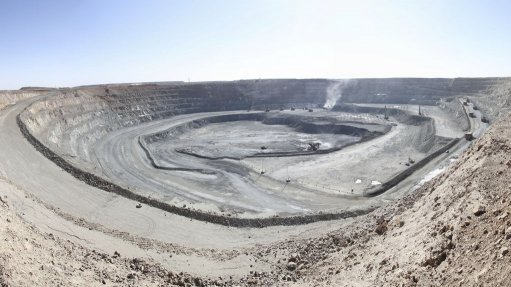Salt in batteries: shift may herald another shakeup
Battery giants are starting to put their money on new sodium-based technology, a sign that there could be yet another shakeup in the industry that’s crucial for the energy transition.
Sodium — found in rock salts and brines around the globe — has the potential to make inroads into energy storage and electric vehicles because it’s cheaper and far more abundant than lithium, which currently dominates batteries. But while chemically and structurally similar, sodium has yet to be used on a large scale, partly due to the better range and performance of similarly sized lithium cells.
That could be about to change. In the past week, Sweden’s Northvolt said it made a breakthrough with the technology, while Chinese EV maker BYD Co signed a deal to build a $1.4-billion sodium-ion battery plant. China’s CATL already said in April that its sodium-based batteries will be used in some vehicles from this year.
“It’s serious investment,” said Rory McNulty, senior research analyst at Benchmark Mineral Intelligence. “It’s creating a confidence boost with them saying we are here to continue scaling capacity to commercialize this technology.”
If sodium products do prove successful, they could curb lithium consumption. It’s also a reminder of the perils of trying to forecast metals usage in a constantly evolving industry as companies seek cheaper and more efficient cells.
While sodium-ion batteries’ low energy density means they’re unsuitable for larger EVs, they could increasingly be used instead of lithium in lower-end, shorter-range vehicles — or for power-grid energy storage, where size isn’t such an issue.
BloombergNEF has said that sodium should cut about 272 000 tons of lithium demand by 2035, or more than one-million tons if lithium supplies can’t meet usage.
Changes in the metals mix in batteries has upended supply-and-demand outlooks and whipsawed prices. Cobalt and nickel — which just a few years ago were seen facing long-term shortages — have had demand estimates revised by the emergence of cells that don’t use them.
And the potential for big price swings is particularly evident in lithium.
A buying frenzy sent prices soaring through last year — a spike that prompted battery firms to look at sodium as a cheaper alternative — before plunging as EV demand disappointed and supply prospects improved.
“Sodium-ion will have a part to play in improving the lithium supply-demand balance,” said Sam Adham, head of battery materials at consultancy CRU Group. “It will dampen those really severe swings in lithium prices.”
Even with the recent slump in lithium prices, sodium is still a cheaper option. If the market does grow, it could potentially echo the rise of lithium-ion phosphate (LFP) cells that have been preferred to higher-performing products due to their lower cost.
Its clearest potential advantage is in storing excess electricity for grids, something that’s becoming more important as the world shifts away from fossil fuels. There, battery performance is less relevant than a low cost.
Sodium’s success will also rest on improving cells’ cycle life — how many times they can be charged and discharged before needing to be replaced. Sodium cells currently average 5 000 cycles, compared with about 7 500 for the most cost-effective lithium products.
The big question is being able to do that, and if it works then there could be more demand from the energy storage sector, said Rystad Energy analyst Duo Fu.
For now, the developing sodium-based cell sector looks like it will be dominated by Chinese producers, who control most of the lithium battery production due to the large size of their operations that keeps costs down. That should give them an advantage over European and American rivals.
European and American manufacturers “have far less experience in producing sodium or lithium batteries at mass scale,” CRU’s Adham said. “You’re able to be cost competitive in reality through economies of scale.”
Comments
Press Office
Announcements
What's On
Subscribe to improve your user experience...
Option 1 (equivalent of R125 a month):
Receive a weekly copy of Creamer Media's Engineering News & Mining Weekly magazine
(print copy for those in South Africa and e-magazine for those outside of South Africa)
Receive daily email newsletters
Access to full search results
Access archive of magazine back copies
Access to Projects in Progress
Access to ONE Research Report of your choice in PDF format
Option 2 (equivalent of R375 a month):
All benefits from Option 1
PLUS
Access to Creamer Media's Research Channel Africa for ALL Research Reports, in PDF format, on various industrial and mining sectors
including Electricity; Water; Energy Transition; Hydrogen; Roads, Rail and Ports; Coal; Gold; Platinum; Battery Metals; etc.
Already a subscriber?
Forgotten your password?
Receive weekly copy of Creamer Media's Engineering News & Mining Weekly magazine (print copy for those in South Africa and e-magazine for those outside of South Africa)
➕
Recieve daily email newsletters
➕
Access to full search results
➕
Access archive of magazine back copies
➕
Access to Projects in Progress
➕
Access to ONE Research Report of your choice in PDF format
RESEARCH CHANNEL AFRICA
R4500 (equivalent of R375 a month)
SUBSCRIBEAll benefits from Option 1
➕
Access to Creamer Media's Research Channel Africa for ALL Research Reports on various industrial and mining sectors, in PDF format, including on:
Electricity
➕
Water
➕
Energy Transition
➕
Hydrogen
➕
Roads, Rail and Ports
➕
Coal
➕
Gold
➕
Platinum
➕
Battery Metals
➕
etc.
Receive all benefits from Option 1 or Option 2 delivered to numerous people at your company
➕
Multiple User names and Passwords for simultaneous log-ins
➕
Intranet integration access to all in your organisation

















